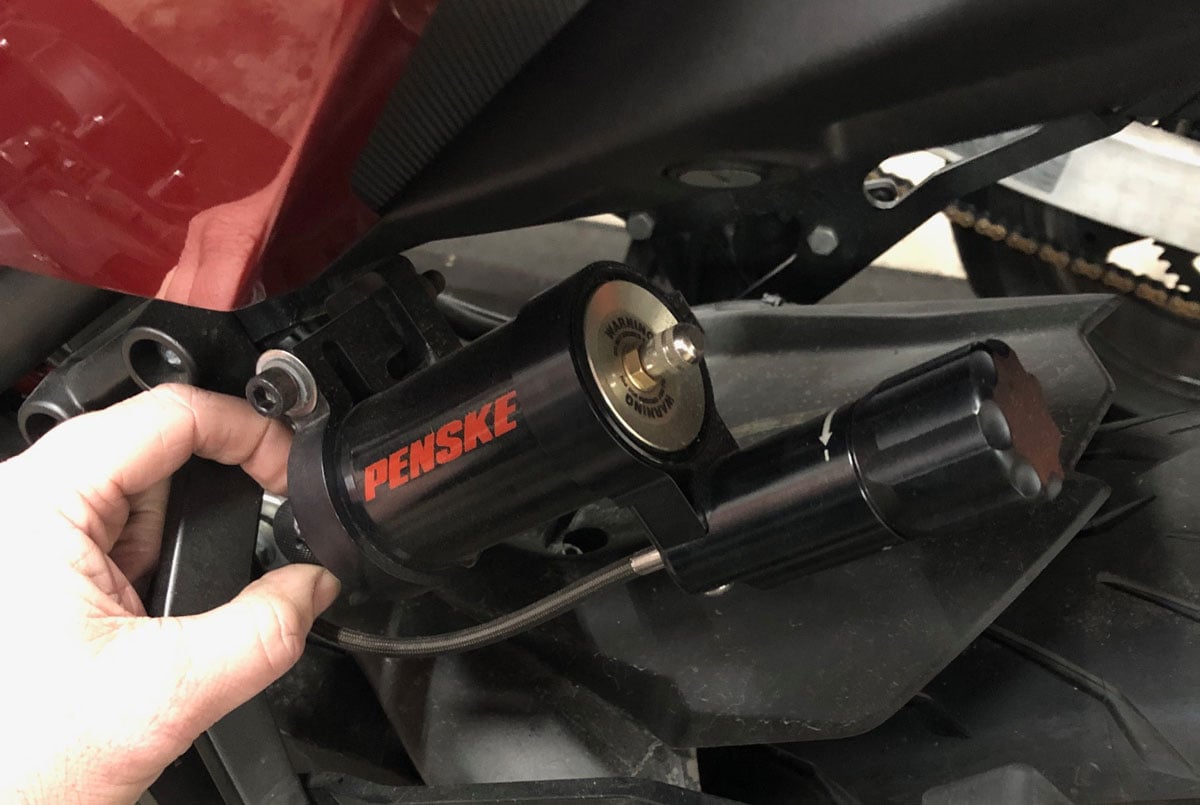Adjusting a Soft Rear Suspension: Balancing Comfort & Performance

November 1, 2021

“I feel like I’m floating on air” is either a good or bad thing to say about a vehicle, depending on who you are.
At the extreme ends of a suspension setup, you have road users who aren’t worried about speed at all and just want the most comfortable ride. Imagine hitting depressions or bumps in the road and barely feeling a thing? At the other end of the extreme is a speed demon who just wants to drive as fast as possible and doesn’t care about comfort.
Most of us are somewhere in the middle.
Firstly, the purpose of suspension is to keep your tires on the ground during acceleration, cruising, turning, and braking. That’s 101. Spring stiffness affects how your vehicle responds while the car is being driven.
Soft suspension is used to swallow bumps in the road and provide a smoother ride but is sometimes prone to dive and squat during braking and acceleration.
Stiff suspension makes your vehicle less forgiving on rough roads but minimizes body motion, so your vehicle will feel more nimble or agile and more willing to change direction.
How do you strike a balance between comfort and performance?
Adjusting a Soft Rear Suspension
When adjusting a soft rear suspension, it’s worth breaking down its components and how you can manipulate them to the greatest effect.
You can make changes to the springs, spring rates, and dampers (shocks).
The adjustments you decide to make will be based on your driving or riding style, body build, and preferences.
Check out our ON-DEMAND WEBINAR: Top 10 Most Common Suspension Issues & How to Resolve Them
In this free webinar, we review the most common suspension issues you're likely to encounter and tips for how you can resolve or avoid them altogether.
Springs
Springs support your car or bike’s weight and absorb or damp the various shocks generated from road friction, and ensure the wheels track the road’s surface as it changes. Your motorcycle or car should remain in the same position relative to the road.
Over a bump, the spring compresses, absorbing the force, and then rebounds to release the energy. The spring compresses and rebounds at a precise rate in an ideal scenario, so you barely feel it.
Spring Rate
This is where personal preference plays a significant role. Not every rider or driver is the same, both in terms of build or driving style. For example: if you have two motorcycles with the same spring rate travel over a bump, the rate at which the spring compresses will be different if the riders are a different weight.
The correct spring rate can be achieved through trial and error.
It’s essential to think carefully about changes you make to the spring rate. Raising it decreases the comfort of your vehicle or bike, as well as handling.
Shocks
Springs control the amount that the wheel moves up and down, but the shocks control the speed at which they move up and down by stopping the spring from compressing or rebounding too quickly. Depending on your setup, they can also separately handle the compression and rebound of the springs.
Stiffer shock rates slow spring movements, while a softer shock rate allows the spring to move faster. If a shock is too stiff, it can cause the tire contact patch to bounce off the road surface over bumps, making your car or bike feel less predictable. If this is happening, you’ll need to soften your shocks.
However, too soft shocks will make the body of your car or bike bounce after hitting a bump or rut. It’s essential to find the middle ground between comfort and performance, but it’s not cut and dry. You need a highly adjustable shock. You’ll need to take baseline measurements, and you’ll need to test and retest incrementally.
Check out our FREE DOWNLOAD: Shock Build and Shock Setup/Lap Time Worksheet
Ride Height
The height of your bike or car has a role to play, and it is essentially the distance between the base of your vehicle and the ground.
Higher ride height means your car or bike will absorb road shocks better, but the trade-off is less precise handling characteristics.
Lower ride height will mean tuning your suspension differently to mitigate bumps in the road and give you more control. A lower ride height also offers other benefits, such as the vehicle’s center of gravity being lower, meaning less rolling. However, when paired with a soft suspension, there’s a risk of bottoming out, so again, finding a sweet spot will help you decide between speed and comfort.
Ride height can be changed on most shocks using a threaded collar at the bottom.
Setting Sag
For riders out there, sag is how much your bike compresses under your load. When you set sag, you can change where your suspension sits and then make adjustments in either direction.
If it drops too much, you risk bottoming out under braking and cornering, but if it doesn’t drop enough, it could top out under acceleration and bumps. Neither is desirable.
Preload Adjustment
Diving deeper into springs, let’s look at spring rate from a granular point of view. Spring rate refers to the force exerted when a given amount compresses the spring. The rate of your spring could be 200 lb/in. If you compress the spring by 1 inch, it will exert a force of 200 lbs back.
Preload allows you to compress the springs when the shocks are fully extended, hence preload compression. Using the example of 200 lb/in: if you turned the preload adjuster and added 1 inch of mechanical compression, the spring would exert 200 lb back. To compress it further, you’d need to apply more than 200 lb of force.
The rate remains the same, but by adding preload, you change how the spring reacts to the weight applied to it when you brake, accelerate, and take corners.
Hard braking and acceleration have the potential to bottom or top out suspension. By not using all of the suspension’s available range, there is a buffer either way.
Is Your Suspension Too Soft?
Depending on how you use your vehicle, it could be.
If you’re a racecar driver, you’ll want stiffer shocks as they work best on a smooth racetrack.
But, if you lower your car or bike and fit stiff shocks to it, it would be a painful ride. You need some degree of softness. Otherwise, you would feel every undulation and bump.
It can be tempting to stiffen your suspension, but consider all of the above before you do. Making adjustments to your bike or car without making the suspension stiffer might bring the results you’re after, and finding a middle ground between soft and stiff shocks is the best way to ensure a comfortable ride with your best performance.
Learn more about Spring Rate or Damping? How to Stiffen Rear Suspension Properly
Let the Experts Help
Penske Racing Shocks is committed to providing you with shocks that meet the highest standards and focus on optimizing your setup before you even buy anything. Continued support after purchase ensures that you can make adjustments with confidence. To learn more about the process, sign up here.


%20(1).png?width=1080&height=1080&name=Heritage%20Cruiser%20Shock%20-%20IG%20(1)%20(1).png)